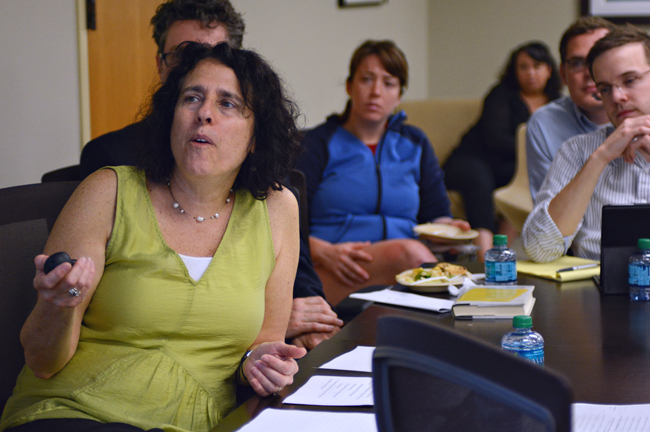According to Laurie Green, associate history professor and published author, hunger played a much larger role in the politics of the 1960s than previously believed.
As part of the Institute for Historical Studies’ workshop series, Green discussed a newly drafted chapter of her book project, revealing political attitudes and injustices in relation to hunger in America in the 1960s.
Green’s new book, to be titled “The Discovery of Hunger in America: The Politics of Malnutrition, Poverty and Race from 1967-1977,” examines many aspects of the issue of poverty. The chapter she discussed during her lecture today focused on photojournalism as a means of making the public aware of hunger in the U.S.
“Coming off of my last book … it was a surprise to me that [hunger during this period] had not been discussed much in literature,” Green said. “There was this incredible explosion of hunger and the politics of hunger in 1967.”
Seth Garfield, history associate professor and director of the Institute for Historical Studies, said Green’s research poses unprecedented questions about hunger in America.
“Green seeks to historicize the politics and technologies that converged on the mass taboo of hunger in the United States,” Garfield said. “It raises provocative questions about the formation of subjectivities linked to historical injustices and bodily deprivation.”
According to Green, the work of photojournalist and activist Al Clayton in the 1960s played a large role in the portrayal of hunger through photography.
“His photos were used in civil rights hearings and television documentaries,” Green said. “But I didn’t want to examine the actual impact of the pictures but why contemporaries perceived these photos as having such a large impact.”
Green said one challenging aspect of the chapter on photojournalism was trying to understand how suffering is perceived through photography.
“It may seem self-evident when you look at a photo, ‘Oh, that person is suffering,’ but it’s not,” Green said. “Photos are constructions. It’s hard to make visible the invisible qualities of life, like pain and suffering.”
Randy Lewis, professor of American studies and lead responder during the discussion, said research such as Green’s can be relevant to today’s political and social issues.
“Without question, there is a need for this sort of research, which implicitly speaks to the ongoing cultural amnesia about food, race and suffering in the United States,” Lewis said. “America keeps discovering poverty and its appetites.”





















